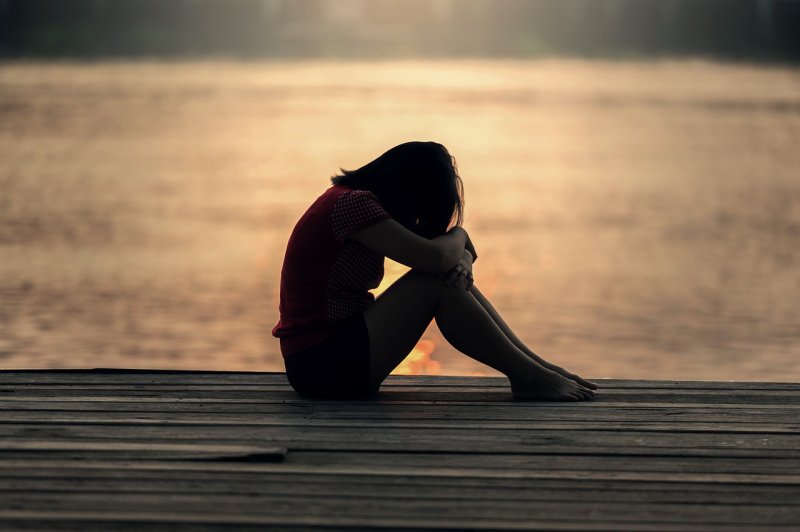By Alan Mozes, HealthDay News

Teen social media posts related to cutting and other forms of self-harm have soared in recent years, a new study shows. Photo by sasint/Pixabay
American teens are increasingly turning to the social media giant Instagram to share graphic images of their own attempts to harm themselves, a new study reveals.
"It could be an attempt to share their emotional or psychological pain with others or find support from others," said study lead author Amanda Giordano. She is an associate professor of counseling and human development services at the University of Georgia, in Athens.
"It could be to discuss different forms of self-injury or how to hide it or do it in a way that does not lead to infection. It could also be a way of seeking help and reasons to stop," Giordano said.
No matter the reason, researchers who tracked Instagram throughout 2018 found that teen postings focused on self-harm -- such as cutting or burning oneself -- rose significantly over the course of the year.
In January and February of 2018, for instance, teens posted between 58,000 and 68,000 images with hashtags related to some form of self-injury in which suicide was not the apparent goal. The researchers labeled such images as reflective of non-suicidal self-injury.
But by December of 2018, that figure had shot up to over 112,000, the study found, with notable rises in the use of three hashtags: #selfharm, #hatemyself and #selfharmawareness.
The big picture was also bleak: Over all of 2018, more than 1.2 million teen NSSI posts were identified on Instagram accompanied by one of the three hashtags, along with two others: #cutting and #selfharmmm.
Overall, the hashtag #selfharm was most closely linked with suicide, at 25.4%, then depression at 25.2%, self-injury at 13.1% and general mental distress and 9.5%, the study found.
The hashtag #hatemyself was most associated with suicide, at 32.1%, then depression at 31.2%, self-injury at 19.9% and anxiety/panic at 6.7%.
A rise in teenage self-harm itself appears to be driving the rise in online expressions about it, Giordano said.
She noted that recent research showed that about 17% of U.S. teens harmed themselves in the previous year. And that percentage appears to be increasing.
For example, one recent study indicated that self-harm among college freshmen shot up from less than 3% in 2008 to more than 19% by 2015.
Along with other recent research, such findings suggest that "self-injury affects a substantial number of individuals, and that rates may be increasing," Giordano said.
"As the prevalence of self-injury increases," she continued, "it is not surprising that hashtags related to self-injury also are increasing on social media platforms."
Giordano and her colleagues found several indications that this is exactly what's happening.
For example, the team noted that while the hashtag #selfharm was almost never used in January 2018, by December, it accompanied more than 45,000 teen posts.
And by year's end, only one of the five highlighted NSSI tags -- #selfharmmm -- saw a drop in overall usage.
As to what compels teens to share their self-harm experiences on social media, Giordano suggested they likely have several needs that they think apps like Instagram can fulfill.
And it could also reflect a risky copy-cat phenomenon. The more teens see others sharing posts about self-harm, the more curious they become and the more inclined they may be to imitate what they see and then share that experience online, Giordano said.
Whatever the main motivator, the analysis raised a troubling concern - the two most commonly associated hashtags with those related to self-injury were #suicide and #depression.
"Therefore, it appears that the individuals using self-harm-related hashtags are associating it with suicidal thoughts as well as feelings of depression," she said. "To me, this emphasizes the need to discuss mental health with youth and ensure they have the support they need."
That thought was seconded by Dr. Robert Glatter, an emergency medicine physician at Lenox Hill Hospital in New York City who reviewed the findings.
"The significant increase in social media posts related to self-injury is a wake-up call not only to children and teens, but also to their parents and caretakers," he said.
Noting that "the reason behind such an increase is complex," Glatter suggested that self-harm behaviors such as cutting "can be a cry for help, and serve as a way to alert parents, friends and teachers of ongoing emotional pain and suffering."
And, he added, feelings of isolation, depression and anxiety probably got worse once the COVID-19 pandemic took hold.
Glatter suggested parents monitor their children's screen time and use, with an eye towards preventing teens from descending down "a slippery slope" in which self-harm is normalized as an outlet for emotional pain and suffering.
"Parents should create an open and non-judgmental environment for sharing and communication in order to allow their child to be honest about and open up regarding what's going on in their life," he suggested.
"When a child feels they have an open line of communication, the potential for early intervention, including psychiatric evaluation and referral, can be life-saving and life-changing," Glatter said.
The findings were published recently in the International Journal for the Advancement of Counselling.
More information
There's more about teens and self-harm at the U.S. National Library of Medicine.
Copyright © 2021 HealthDay. All rights reserved.
No comments:
Post a Comment